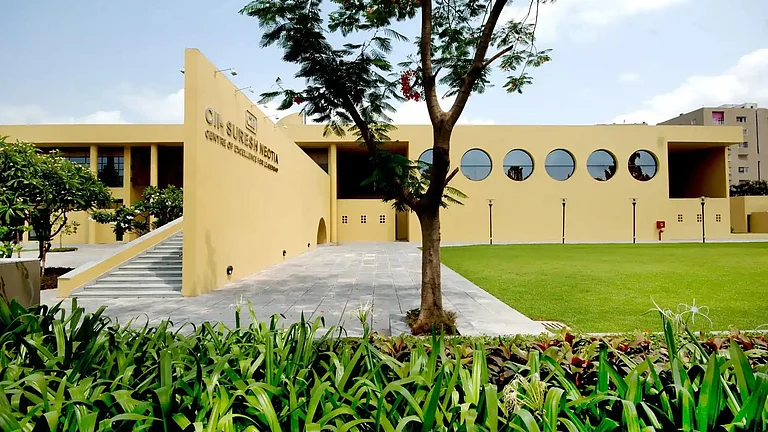Higher education is critical for socio-economic advancement and an important driver of individual economic mobility. Aspirants of higher education, therefore, prefer institutions that assure high quality of learning experience, since industry and business organisations require highly skilled and trained workforce to meet the demands of today’s increasingly competitive global economy.
Against this backdrop, most higher education institutions (HEIs) in India are seen as producing graduates in subjects that the job market no longer requires. An interface between institutions and the industry for sharing knowledge, technology and financial resources has almost negligible presence, thereby adversely affecting entrepreneurial skills and training.
This is why over three lakh students migrate to other countries annually in search of higher learning and earning, while less than 3,000 students come to India for technical and professional education every year. The factors like a lack of socio-cultural environment for providing boarding and lodging facilities, common entrance test-based admissions policy, caste-based reservations of seats and non-availability of financial support discourage students from developing countries of South Asia and Africa from joining India’s HEIs in bigger numbers.
Global credibility of our education system must improve. Merely one-third of HEIs are rated in the highest grade (A+) by the National Assessment and Accreditation Council, and none of them have qualified for inclusion in the Top 200 institutions of the world. Most Central and state universities, including different chapters of the Indian Institute of Technology (IIT) and the Indian Institute of Management do not have hostel facilities of reasonable standards to accommodate foreign students. More importantly, merit-cum-caste-based reservations policy for admissions to various technical, medical and professional courses in top-performing institutions like the IITs restrict the entry of foreign students. HEIs must not only have flexible admission policies for foreign students but also provide remedial support for their academic improvements and social inclusion.
As is known, the Central government has made its oft-repeated commitment to raise public expenditure on education to 6% of the country’s gross domestic product (GDP), which has never been realised. This allocation has hovered around 3% to 4% of the GDP in the last six decades. Expenditure on higher education has been less than 1% of the GDP. Based on the long-term trend expenditure and the current priority areas of development—mainly the financial needs for providing economic stimulus for the manufacturing industry and job creation—it seems unlikely that the education budget will be doubled to implement the various recommendations of the New Education Policy 2020 (NEP20) for reforming the education sector. For instance, the Union budget does not make necessary provisions for implementing major proposals such as filling up of vacant faculty positions and investments in R&D activities in HEIs, including quality assurance schemes.
Unfortunately, the utilisation of the 1% of the secondary and higher education cess, which is being collected from income taxpayers since 2004, is abysmally low at merely 7% of the total collections for higher education. Accruals from the cess were to be utilised for promotion of ongoing schemes for secondary and higher education, mainly for expansion of facilities to improve access and quality of teaching, research and innovation. Sadly, this has not happened.
Many top political leaders and almost all the big business houses have established self-financing institutions, which they operate as a family enterprises. The private HEI lobby has significant influence in the decision-making process.
Engineering and medical education in private institutions is cost prohibitive and unaffordable for a majority of students. While private HEIs are required to operate as not-for-profit institutions, the proliferation of many such institutions in India and abroad indicates huge profit-making thorough financial gimmicks.
The issue of governance of a large and diversified system is a daunting one. Enforcing quality assurance may require huge investments in research and development activities that may not be commercially viable or profitable. To encourage effective competition, HEIs may be allowed to operate as for-profit corporate entities to allow for free entry and exit of best-performing institutions, as discussed below.

India’s higher education system is the second largest system in the world after China and, in the foreseeable future, India is poised to become number one in terms of student enrolment in HEIs. There are already over 1,000 university-level institutions and over 40,000 colleges which cater to different types and levels of technical, vocational and professional programmes. In all, more than three crore students are enrolled for different courses, accounting for nearly 28% of age-specific (18-23 years) population. By 2035, this ratio may rise to 50%. In this context, public-private-sector partnership is the key to making India a global hub for higher education and research.
Private HEIs are required to operate as not-for-profit institutions. They have, however, limited options to attract private investments, as they are not permitted to generate enough surplus for payment of profits to new investors. As some university programmes, namely medical and computer sciences, have high economic value in the job market and the beneficiaries of such courses are more likely to be from the better off sections of society, HEIs should be allowed to charge fees over and above the nominal cost. This, in turn, may allow for attracting adequate funds from investors for maintaining and promoting excellence in higher education and research.
It is necessary, therefore, to allow private HEIs to function as for-profit institutions on the pattern of corporate entities. Most European and Asian countries already allow establishing education institutions for profit. There is no reason why India too should not allow private HEIs, domestic and foreign, to operate as for-profit entities with a view to attract investments for promoting entrepreneurial skills and training and to make the country a global education hub. Eventually, the education sector may turn out to be a major economic activity like any other socio-economic sector for offering employment opportunities to millions of aspirants. In the short term, educational tourism may also increase, giving rise to further economic activities.
Moreover, diversion of crores of rupees to other countries may stop as the students going abroad for higher education may find worthwhile places of learning within the country. A concerted effort in this direction is urgently called for to boost India’s economy by raising productivity of resources through investments in human resource development. This is not possible without giving full financial, academic and administrative autonomy to HEIs in the private sector.
As is known, less than 10% of the working population in India is vocationally and technically trained, as compared to 60% to 80% in Korea, China, Japan, USA and other countries. Without strong focus on entrepreneurial education and skill development, as well as having an interface between the industry and HEIs, it will not be possible to transform higher education and research to promote human capital required for national development. Salient features of the NEP20 must, therefore, be urgently implemented in letter and spirit.
M.M. Ansari, Former Central Information Commissioner and Former Member, University Grants Commission

























